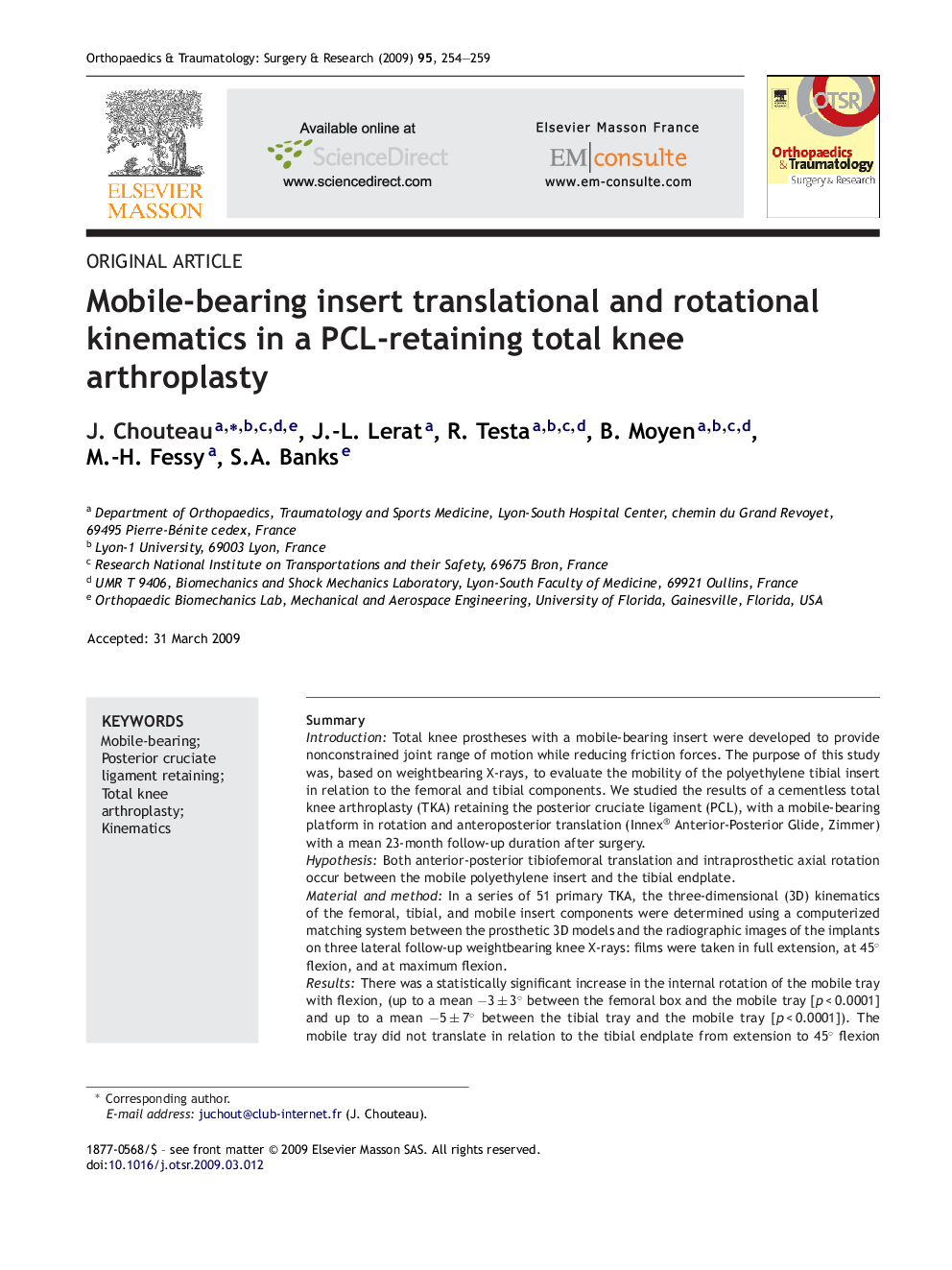| کد مقاله | کد نشریه | سال انتشار | مقاله انگلیسی | نسخه تمام متن |
|---|---|---|---|---|
| 4082616 | 1267648 | 2009 | 6 صفحه PDF | دانلود رایگان |

SummaryIntroductionTotal knee prostheses with a mobile-bearing insert were developed to provide nonconstrained joint range of motion while reducing friction forces. The purpose of this study was, based on weightbearing X-rays, to evaluate the mobility of the polyethylene tibial insert in relation to the femoral and tibial components. We studied the results of a cementless total knee arthroplasty (TKA) retaining the posterior cruciate ligament (PCL), with a mobile-bearing platform in rotation and anteroposterior translation (Innex® Anterior-Posterior Glide, Zimmer) with a mean 23-month follow-up duration after surgery.HypothesisBoth anterior-posterior tibiofemoral translation and intraprosthetic axial rotation occur between the mobile polyethylene insert and the tibial endplate.Material and methodIn a series of 51 primary TKA, the three-dimensional (3D) kinematics of the femoral, tibial, and mobile insert components were determined using a computerized matching system between the prosthetic 3D models and the radiographic images of the implants on three lateral follow-up weightbearing knee X-rays: films were taken in full extension, at 45° flexion, and at maximum flexion.ResultsThere was a statistically significant increase in the internal rotation of the mobile tray with flexion, (up to a mean −3 ± 3° between the femoral box and the mobile tray [p < 0.0001] and up to a mean −5 ± 7° between the tibial tray and the mobile tray [p < 0.0001]). The mobile tray did not translate in relation to the tibial endplate from extension to 45° flexion (0 ± 2 mm [range: −5 to 6 mm]). However, from 45° to maximum flexion, a statistically significant mean 1 ± 2 mm (range: −2 to 9 mm) of anterior translation (p < 0.0001) was found.DiscussionThe extent of insert mobility varies from one study to another. Some have reported relatively limited mobility stemming from a superior surface that is not highly congruent, (thus allowing anterior-posterior and mediolateral translation through gliding of the femur in contact with the insert). Other studies have reported mobile-bearing tray mobility in relation to the tibial endplate and minimal rotation at the femoral component level. In this series of PCL retaining TKA with a mobile-bearing platform, the mobile-bearing platform showed a progressive increase in internal rotation during flexion. Most of this rotational mobility occurred between the mobile platform and the tibial endplate, confirming our hypothesis. However, with flexion, the femoral component increased its mobility relatively to the platform. During flexion, an anterior-posterior translation occurred between the femoral implant and the tibial insert, and between the tibial insert and the tibial endplate, but the direction of the mobile tibial insert translation remained unpredictable with this nonconstrained implant design used.Level of evidence: Level IV. Prospective non-controlled therapeutic study.
Journal: Orthopaedics & Traumatology: Surgery & Research - Volume 95, Issue 4, June 2009, Pages 254–259